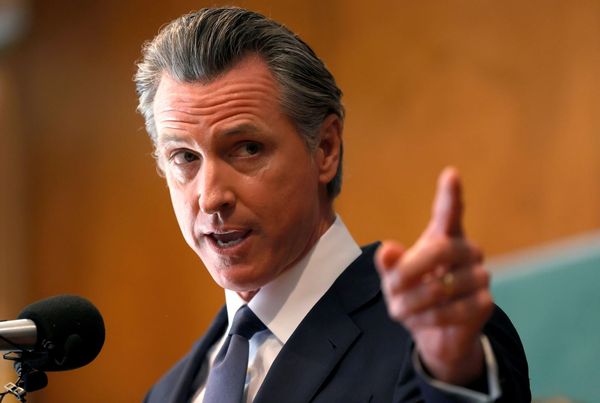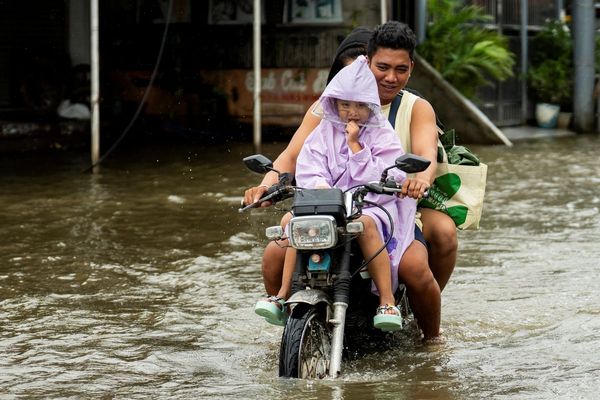
On the 25th anniversary of the Sydney Olympics, the airport which welcomed athletes and thousands of fans to the city – Sydney Kingsford Smith – declared its plan to dominate the competition.
The privately owned airport’s 2045 master plan, released on Monday, aims to lift annual passengers to 72 million, up from 41 million now, within 20 years. The airport described the planned construction as its biggest expansion since the 2000 games.
Sign up: AU Breaking News email
The airport’s chief executive, Scott Charlton, has said Kingsford Smith must compete with the new, government-owned Western Sydney airport, scheduled to open in late 2026. The new airport is aiming for 82 million passengers annually by 2063.
But already there are concerns about Western Sydney’s viability, not least because of uncertainty over transport links. So what does Kingsford Smith’s plan mean for the new contender out west? Here are the winners and losers in the contest for Sydney’s airspace.
The plans
Sydney airport’s draft 2045 master plan – open to feedback until December – accommodates 36.4 million international passengers and 36.2 million domestic and regional passengers by 2045.
Freight will grow to 1.4m tonnes annually, more than double current levels.
The plan centres around the linking of the two domestic terminals, T2 and T3, adding up to 12 international gates to create a precinct from which regional, domestic and overseas services all depart. Two further gates will be added to the T1 international terminal.
Meanwhile, Western Sydney airport’s 2045 master plan – subject to government approval later this year – details steps to reach 10 million total passengers by 2033, and 19.3 million by 2045.
Its freight volumes are projected to rise to about 547,000 tonnes annually by 2045, with long-term forecasts at 1.8m tonnes annually.
The new airport’s domestic and international services will operate from a single terminal, and just one runway until at least the 2050s.
The winners
The head of the school of project management at the University of Sydney, Nader Naderpajouh, says competition is a good thing for travellers and airlines. “Now we have an airport that is … pushing the other airport to also improve and expand.”
While Sydney airport’s passenger numbers are forecast to go up 75% by 2045, the number of flights will go up by 34%.
Mathew Hounsell, a transport expert at the University of Technology Sydney, says passenger targets will be achieved by increasing passenger density and load, “which means cramming more people in and using wide-body aircraft”. That may mean more competitive fares from the airport, but don’t expect lots of legroom.
Sydney’s master plan also confirms changes to flight paths, principally to its main north-south runway, to accommodate Western Sydney airport’s 24-hour runway. Sydney airport’s three runways are subject to an 11pm to 6am curfew.
Hounsell says curfew-free operations could mean small wins for Western Sydney, including the market for low-cost carrier flights to holiday destinations and connecting hubs in south-east Asia and some international freight. But the airport’s distance from the CBD means it won’t make a dent in Sydney airport’s “cash cow” routes to Brisbane, Canberra and Melbourne, he says.
Flight path changes will see the route taken by planes on Sydney airport’s north-south runway shift west slightly, over inner-west suburbs including Dulwich Hill and Ashfield, offering suburbs closer to the CBD some respite at the expense of others.
“There would be some relief,” says Hounsell of the airport’s noise-reduction strategy, adding that the airport’s promise of quieter planes, such as the Airbus A350, is only “a relative measure”. The airport’s master plan still references its cap of 80 movements an hour, which is a plane taking off every 45 seconds.
The losers
Hounsell says Western Sydney airport stands to lose out from its rival’s ambitious master plan, characterising it as move to “kneecap” its new competitor.
Sydney airport declined to comment on the potential impact of its 2045 targets on its rival. A spokesperson for Western Sydney airport said its targets remained the same, and its position as “Sydney’s only 24-hour international gateway” meant it was “well-positioned” to bring in new operators.
Only four airlines – Qantas, Jetstar, Singapore Airlines and Air New Zealand – have so far confirmed their plans to use the new airport. Hounsell says the airport may need to “take a chill pill” when it comes to the 80 million passenger target.
Naderpajouh says neither airports’ plan takes into account the impact of the climate crisis on the number of passengers wanting to travel.
Hounsell says the airports haven’t factored in the effects of rising house and energy prices and stagnant wages on passenger demand, adding high targets also show “no one in this industry is considering climate change”, including pollution.
Asked about the impact of high passenger targets on the climate, Sydney airport’s spokesperson deferred to the climate resilience strategy in its master plan, which sets out its plan to achieve net zero emissions in its operations by 2030.
A spokesperson for Western Sydney airport said the new terminal incorporated recycled materials, as well as thousands of solar panels. It has infrastructure to support sustainable aviation fuel and electric ground services vehicles “over the years ahead”.
On the timing of Sydney airport’s push and its impact on a fledgling Western Sydney airport, Naderpajouh says there is “never a right time for a project”. He cites the Opera House, which was “hugely over time, massively over budget”.
“When you look at it 50 years after, it’s a great success, not only for Sydney, but the whole of Australia.”







